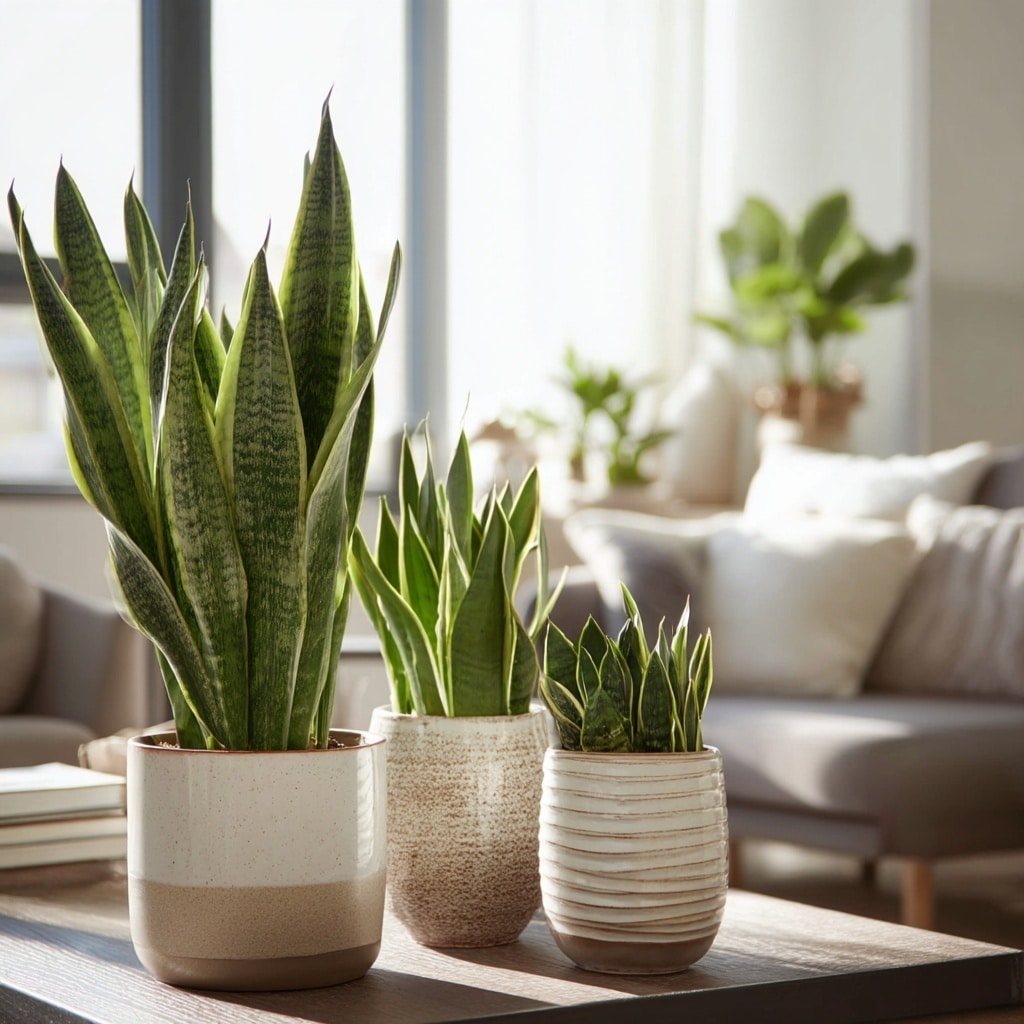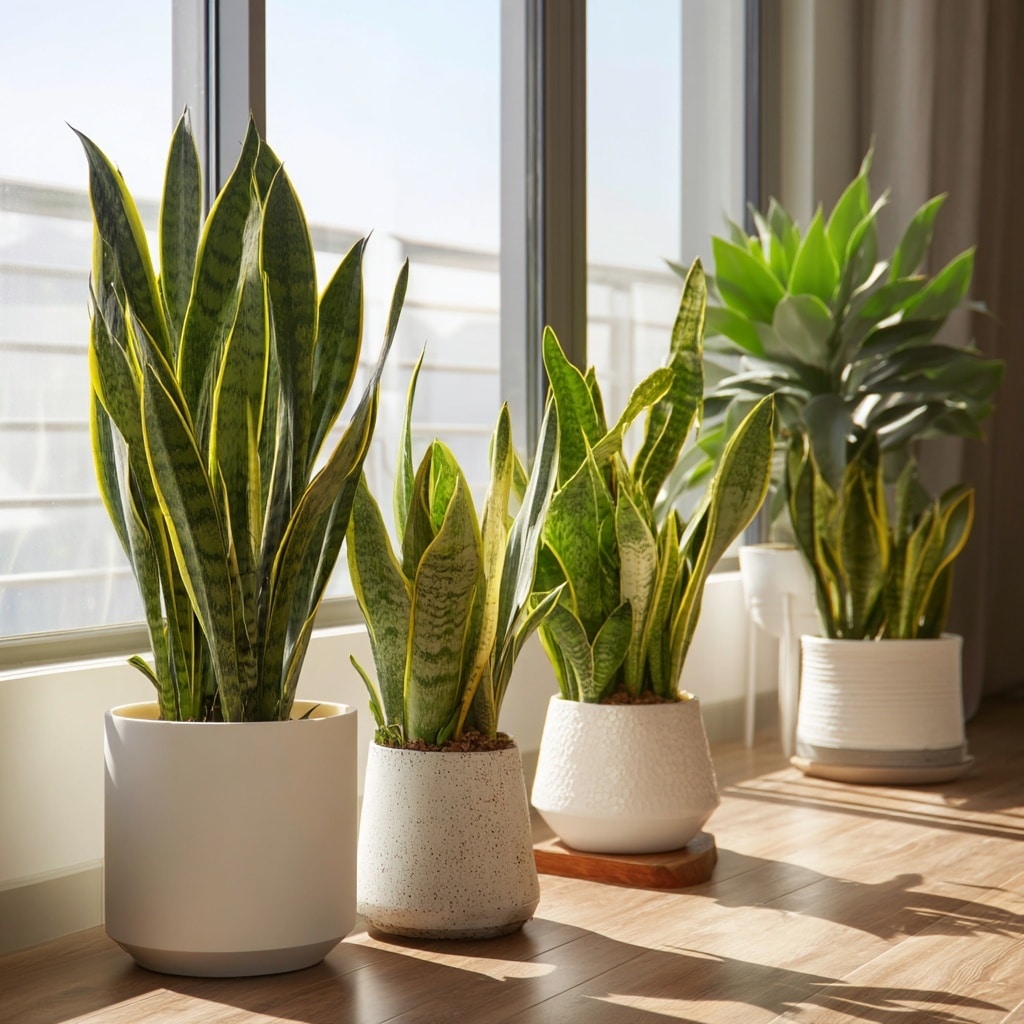Snake plant is one of the most resilient, elegant, and beginner-friendly houseplants you can grow. With its striking upright leaves and minimal care needs, it’s a favorite in homes, offices, and even on patios. Whether you know it as Sansevieria, mother-in-law’s tongue, or viper’s bowstring hemp, this plant stands out for both its beauty and benefits.
Native to regions of Africa and Asia, the snake plant adapts effortlessly to indoor environments. It thrives on neglect, tolerates low light, and purifies the air while demanding little in return—making it the perfect companion for even the busiest plant parent.
In this guide, you’ll learn how to care for your snake plant the right way, and why it’s one of the most rewarding plants to keep indoors.
Table of Contents
5 Amazing Benefits of the Snake Plant
Whether you’re a seasoned plant lover or just starting out, the snake plant offers more than just good looks. Here are five standout reasons why this hardy houseplant deserves a spot in every home.
1. Naturally Purifies Indoor Air
Snake plants are known for their ability to filter toxins like formaldehyde, benzene, and xylene from the air. According to NASA’s Clean Air Study, Sansevieria is one of the top indoor plants for improving air quality. Its upright leaves absorb carbon dioxide and release oxygen, especially at night, making it a great addition to bedrooms.
2. Exceptionally Low Maintenance
If you’ve ever struggled to keep a plant alive, the snake plant is your new best friend. It tolerates low light, infrequent watering, and general neglect with ease. This makes it perfect for busy households, frequent travelers, or forgetful plant owners.
3. Space-Saving and Stylish
Thanks to its vertical growth habit and compact size, the snake plant fits perfectly in small spaces like desks, shelves, or narrow corners. It adds a modern touch to interiors—from minimalistic to boho styles—without crowding your room.
4. Endless Variety and Visual Appeal
There are dozens of snake plant varieties, each offering a unique leaf shape, color, and texture. From deep greens to variegated stripes, you can mix and match different types to suit your decor. Popular cultivars include ‘Laurentii’, ‘Moonshine’, and ‘Cylindrica’.
5. Easy to Propagate and Share
Snake plants can be propagated from leaf cuttings or by division, which means one plant can easily become many. Whether you want to fill your home with greenery or gift baby plants to friends, it’s a cost-effective and rewarding process.
Snake Plant Care Tips: Keep It Thriving with Minimal Effort
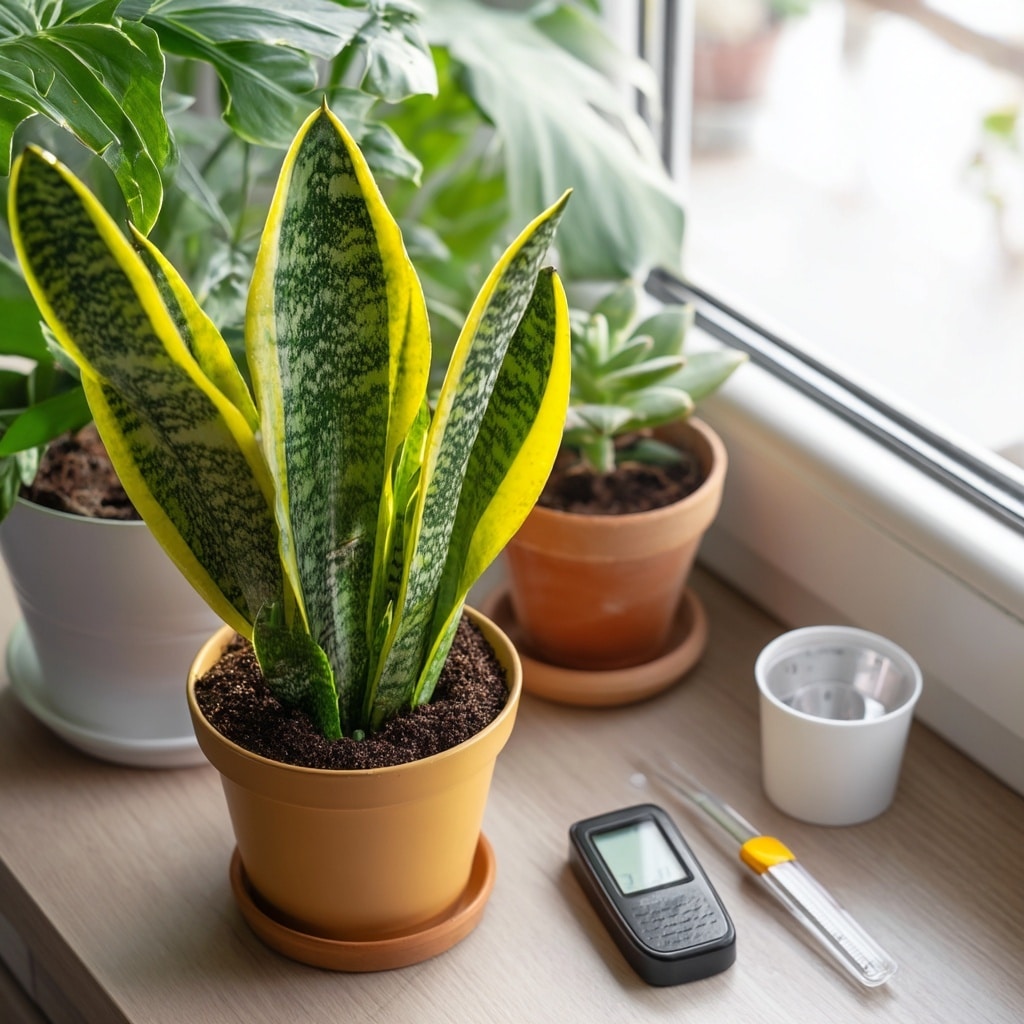
The snake plant is famously hardy, but a few simple practices will help it look its best. Below are the essentials—light, water, temperature, soil, and more.
How Much Light Does a Snake Plant Need?
Snake plants are incredibly adaptable when it comes to lighting. They can survive in low light, but will grow best in bright, indirect sunlight. A little morning or evening sun is fine, but avoid placing them in harsh, direct midday rays, which can cause the leaves to burn.
✅ Best location: Near an east- or north-facing window with filtered light.
How Often Should You Water Snake Plants?
Overwatering is the #1 killer of snake plants. Let the soil dry out completely between waterings.
- Spring to fall: Water every 2–4 weeks
- Winter: Water once every 6–8 weeks
Always check the top 2–3 inches of soil—if it’s still damp, wait. Snake plants are drought-tolerant and can survive being dry much better than being soggy.
🚫 Avoid: Pots without drainage holes and letting water sit at the bottom.
Ideal Temperature Range
Snake plants thrive in typical indoor conditions. Keep them in spaces between:
- 65°F–80°F (18°C–27°C) for best growth
- Can survive as low as 41°F (5°C) if soil is dry, but not ideal
Protect them from cold drafts in winter and avoid placing them next to heaters or AC vents.
Soil and Fertilizer
Think succulent-style soil—well-draining and gritty.
- Use cactus mix or regular potting soil with added perlite or sand
- Fertilize lightly 1–2 times during spring and summer with a foliage-friendly houseplant fertilizer
- No feeding needed during fall or winter
Do Snake Plants Need Frequent Repotting?
Not at all. Snake plants are slow growers and actually enjoy being root-bound. You’ll only need to repot:
- Every 3–5 years, or
- If the roots crack the pot or push the plant upward
Choose a pot just 1–2 inches wider than the current one to avoid overwatering risks.
What About Pests?
Healthy snake plants rarely attract pests. But if stressed (from overwatering, poor lighting, or cold), they may get:
- Mealybugs
- Spider mites
Wipe them off with a damp cloth and adjust care conditions to help the plant bounce back.
Snake Plant Propagation & Troubleshooting Tips
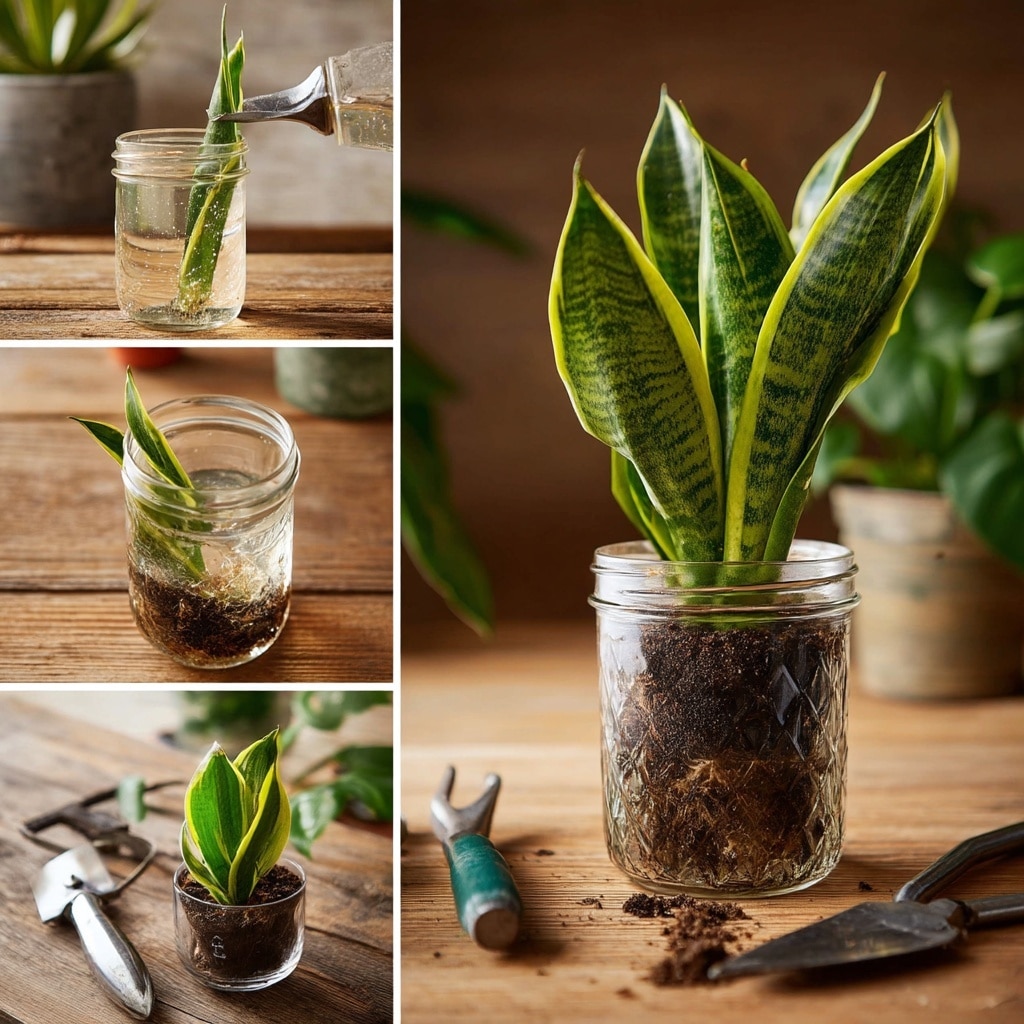
One of the best parts of owning a snake plant is how easy it is to multiply. Whether you’re looking to grow new plants from cuttings or save one that’s struggling, these methods will help you succeed.
How to Propagate a Snake Plant
There are two easy ways to propagate:
1. Leaf Cuttings in Water
- Cut a healthy leaf near the base
- Let it air dry for a day or two to prevent rot
- Place the cut end in a jar of clean water
- Keep in indirect sunlight and change the water weekly
- Roots appear in 3–6 weeks
2. Leaf Cuttings in Soil
- Same cutting and drying process
- Insert cuttings into well-draining soil
- Water lightly and keep warm
- New roots will develop in a few weeks
🪴 Pro Tip: Cut long leaves into 2–3 inch segments and plant them upright—just remember which end was the base.
3. Division of Rhizomes
If your plant has multiple “crowns” or growth clusters, simply divide the root ball and repot into separate containers.
How to Revive a Dying Snake Plant
Snake plants rarely die without warning. Here’s how to troubleshoot:
- Mushy leaves or base? Too much water. Cut off damaged parts and repot in dry soil.
- Wrinkled or curling leaves? Underwatering. Give it a good drink and resume regular care.
- Fading or pale color? Light issue. Move to a brighter location.
- Leaf tips browning? Can be due to low humidity, drafty spots, or inconsistent watering.
If all else fails, propagate a healthy portion of a leaf to start fresh.
Is the Snake Plant Toxic to Pets?
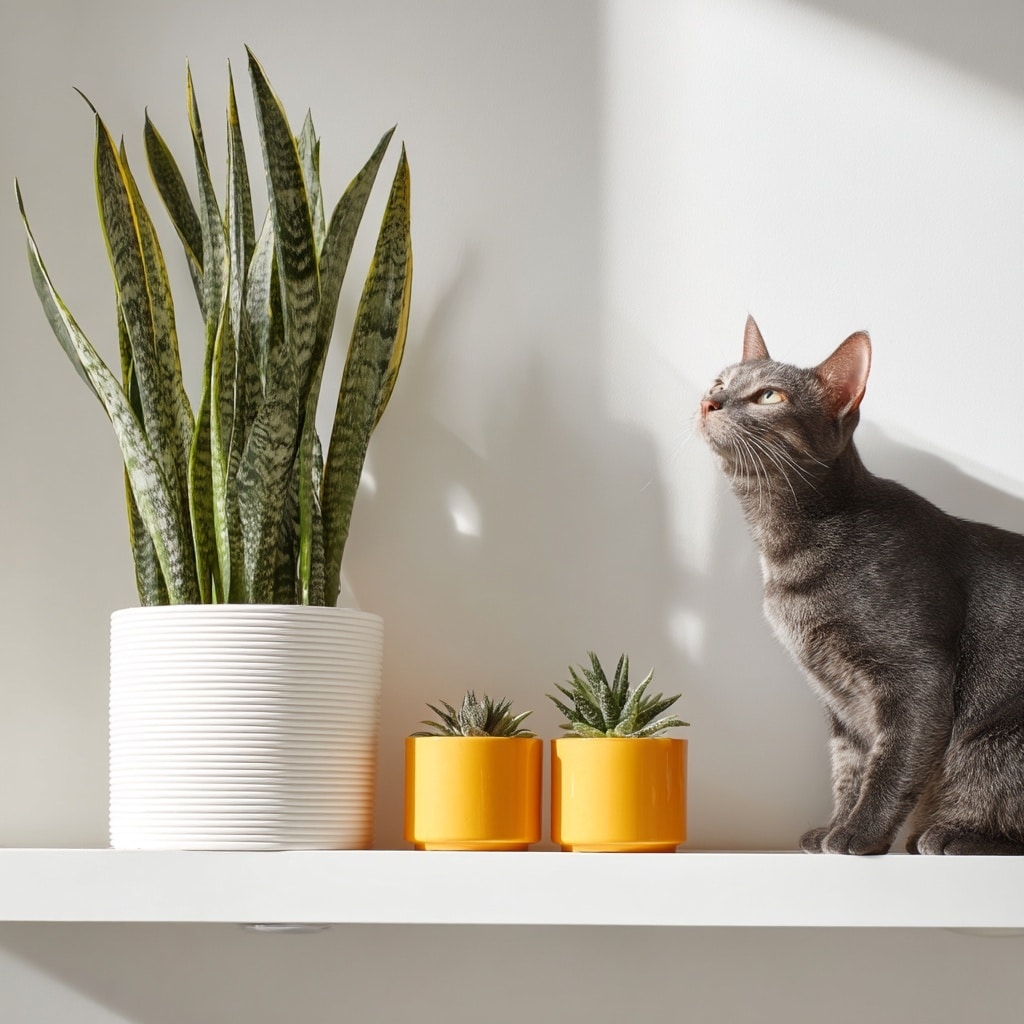
While the snake plant is beautiful and beneficial for humans, it’s important to note that it’s mildly toxic to cats and dogs if ingested. The plant contains compounds called saponins, which can cause:
- Nausea
- Vomiting
- Diarrhea
If your pet is prone to chewing on leaves, it’s best to keep snake plants out of reach—on high shelves, hanging planters, or in pet-free rooms.
🐾 Pro Tip: You can also rotate plants between safe and risky areas depending on your pet’s habits.
Conclusion

The snake plant is one of the most rewarding houseplants you can grow. It purifies the air, fits beautifully into any space, and demands little in return. With the right care—just the right light, minimal watering, and occasional propagation—you’ll enjoy its upright charm for years to come.
Whether you’re looking to expand your indoor jungle or need a foolproof starter plant, the snake plant delivers in every way.

